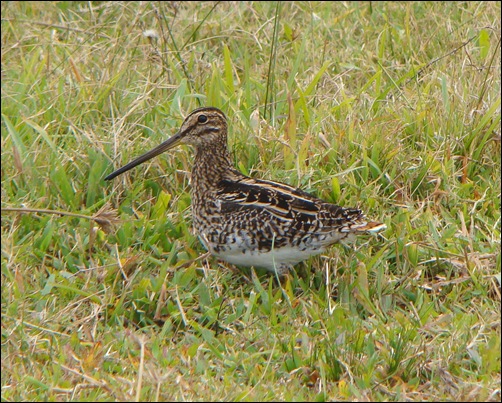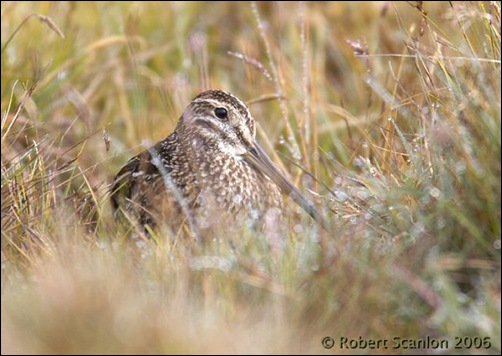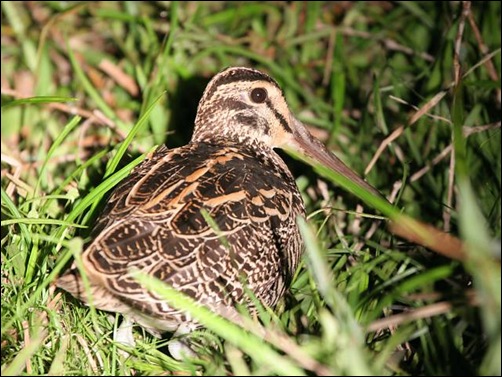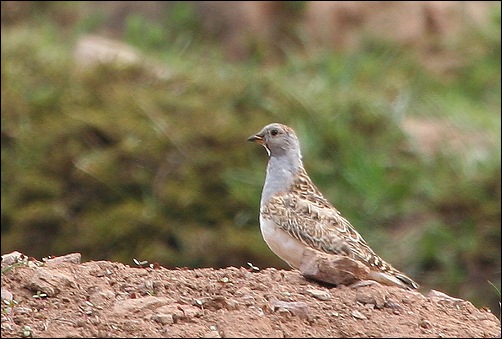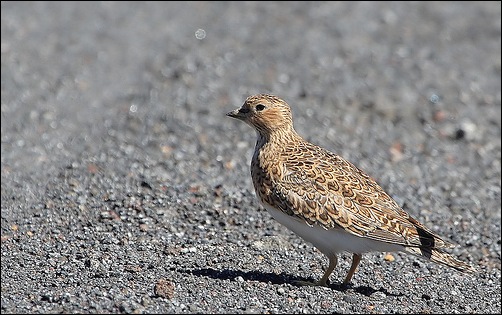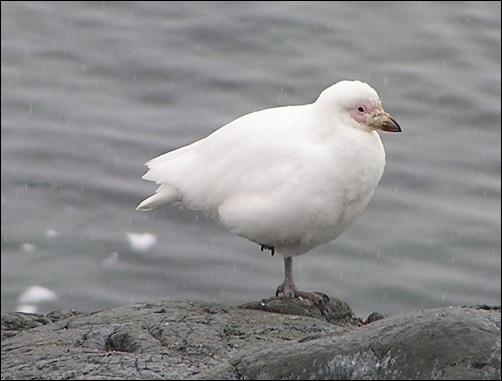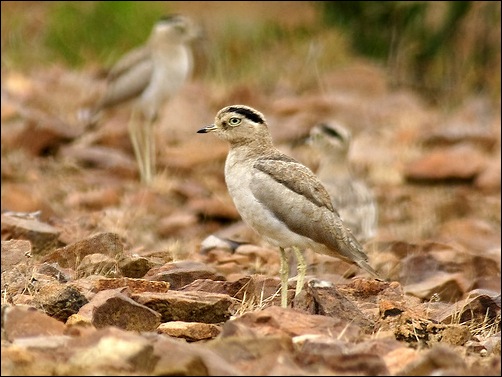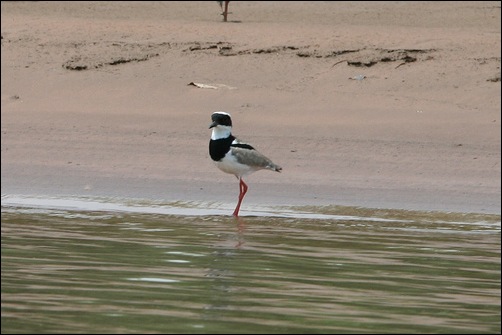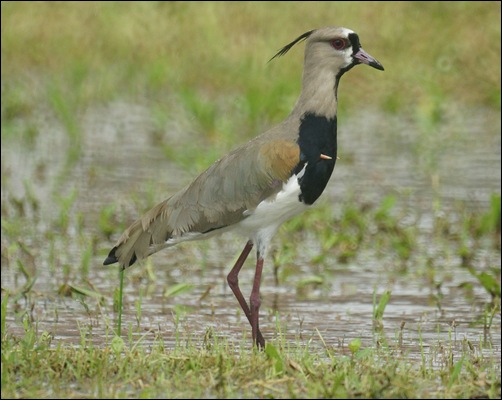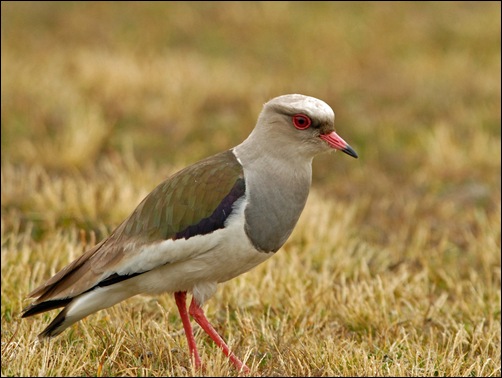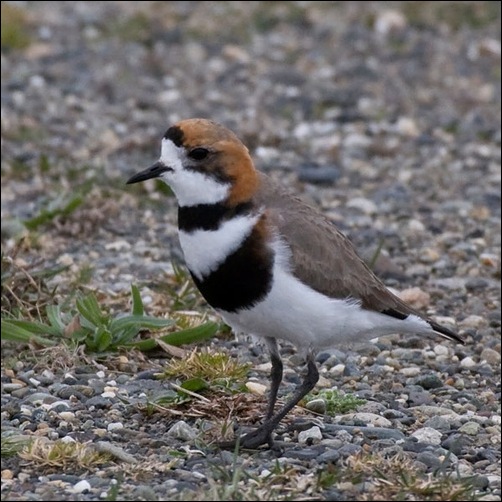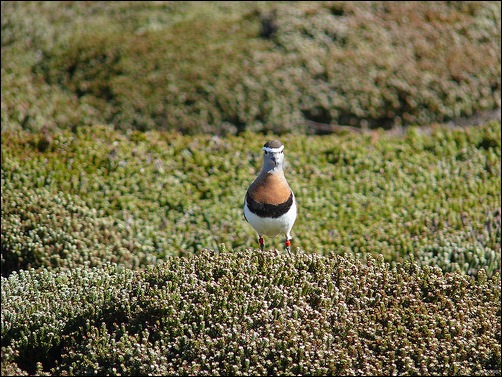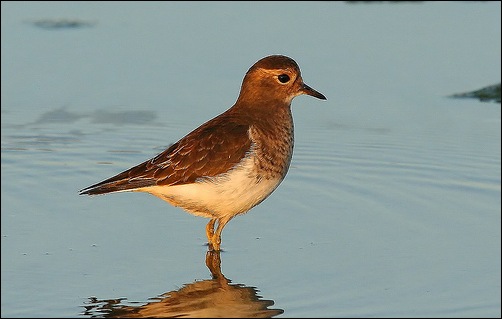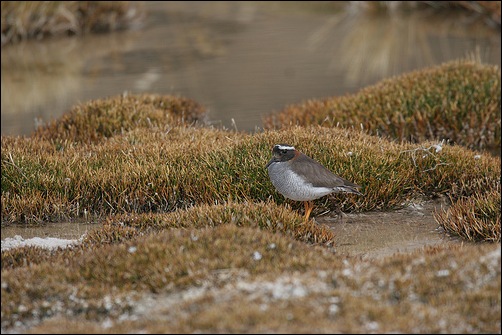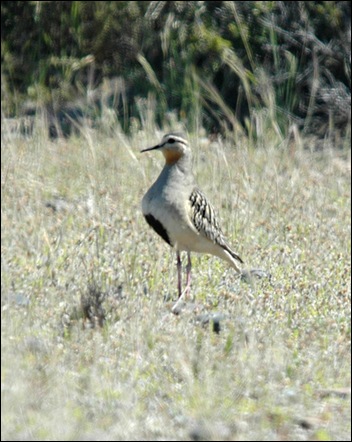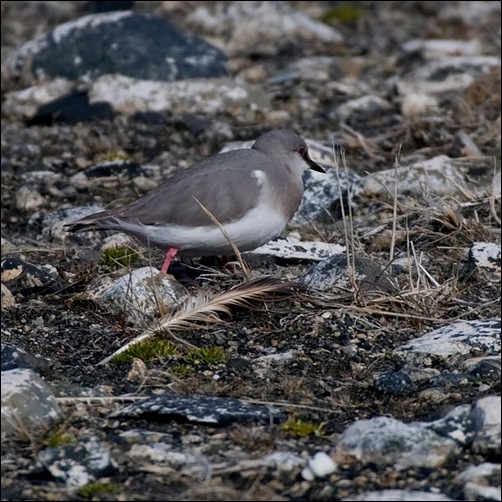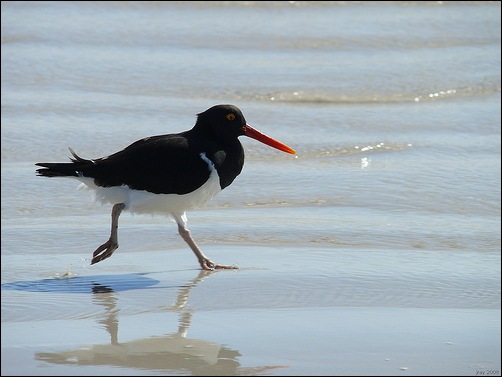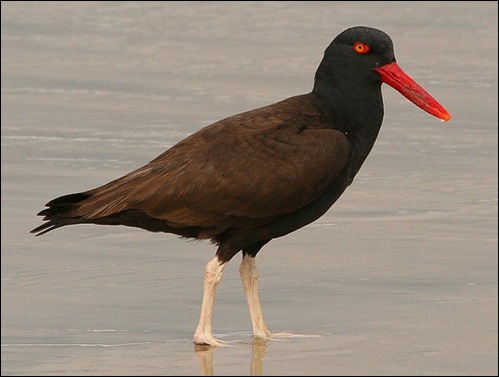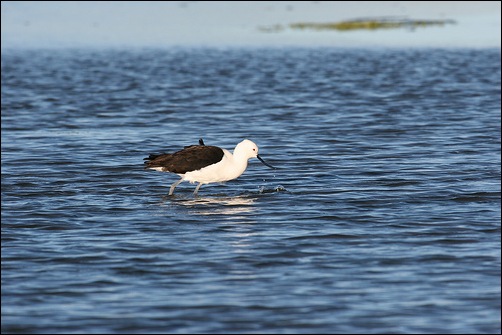Wattled Jacana (Jacana jacana)
Distribution: Resident breeder from western Panama and Trinidad south through most of South America east of the Andes; in marshes and shallow lakes.
Conservation status: Least Concern.
South American Painted-Snipe (Nycticryphes semicollaris)
Distribution: Southern Brazil, Paraguay and Uruguay to Chile and Argentina. It inhabits lowland freshwater wetlands, including wet grasslands.
Conservation status: Least Concern
South American Snipe (Gallinago paraguaiae)
Distribution: Breeds in most of South America away from the Pacific coast and eastern Brazil, and also the Falkland Islands (Islas Malvinas), Trinidad and possibly Tobago. The nominate lowland race G. p. paraguaiae is resident, but southern G. p. magellanicae migrates north in winter, abandoning Tierra del Fuego altogether, and the Andean G. p. andina moves to lower ground; in wet grassy savannah, peat bogs and boggy rivers.
Conservation status: Least Concern
South American Snipe ©Cláudio Dias Timm
Puna Snipe (Gallinago andina)
Distribution: Ecuador, Peru, Chile, Bolivia and Argentina; in bogs, marshes, and edges of lakes at 3000-4000 m.
Conservation status: Least concern
Noble Snipe (Gallinago nobilis)
Distribution: Colombia, Ecuador, Peru and Venezuela above or just below the treeline.
Conservation status: Least Concern
Noble Snipe ©Robert Scanlon
Giant Snipe (Gallinago undulata)
Distribution: nominate subspecies G. u. undulata occurs in two distinct areas, one in Colombia, and the other from Venezuela through Guyana, Suriname and French Guiana to extreme north-eastern Brazil. The southern subspecies G. u. gigantea is found in eastern Bolivia, eastern Paraguay and south-east Brazil, and probably also in Uruguay and north-eastern Argentina, in tall vegetation in swamps and flooded grasslands, and occasionally in dry savannah.
Conservation status: Least Concern
Gigant Snipe ©Lee Dingain
Fuegian Snipe (Gallinago stricklandii)
Distribution: Breeds in south-central Chile and Argentina south to Tierra del Fuego. It is mainly sedentary, but the Tierra del Fuego population winters in mainland Chile; found in grassy and forested boggy areas with low scrub or bushes; at altitudes ranging from 4200 m in the north of its distribution, down to nearly sea level in Tierra del Fuego.
Conservation status: Near threatened
Andean Snipe (Gallinago jamesoni)
Distribution: Andes in Bolivia, Colombia, Ecuador, Peru and Venezuela. It appears to be entirely sedentary, with no evidence of migration; in marshy areas where grassland and forest intergrades, at altitudes ranging between 2100 – 3800 m
Conservation status: Least Concern
Imperial Snipe (Gallinago imperialis)
Distribution: Peru, Ecuador and Colombia; in elfin forest around the tree line between 2750-3500 m.
Conservation status: Near Threatened
Rufous-bellied Seedsnipe (Attagis gayi)
Distribution: Andes of Ecuador, Peru, Bolivia, Chile and Argentina between 4000-5000 m.
Conservation status: Least Concern
White-bellied Seedsnipe (Attagis malouinus)
Distribution: southern parts of Argentina and Chile and is a vagrant to the Falkland Islands (Islas Malvinas); in temperate grassland and swamps.
Conservation status: Least Concern
Gray-breasted Seedsnipe (Thinocorus orbignyianus)
Distribution: Argentina, Bolivia, Chile, and Peru; in temperate grassland, subtropical or tropical high-altitude grassland and swamps.
Conservation status: Least Concern
Gray-breasted Seedsnipe ©Pablo Caceres Contreras
Least Seedsnipe (Thinocorus rumicivorus)
Distribution: Argentina, Bolivia, Chile, and Peru and has been recorded in Ecuador, the Falkland Islands (Islas Malvinas), Uruguay and possibly Brazil; in temperate grassland, subtropical or tropical high-altitude grassland, and pastureland.
Conservation status: Least Concern
Least Seedsnipe ©Pablo Caceres Contreras
Snowy Sheathbill (Chionis albus)
Distribution: Breeds on the Antarctic Peninsula, and along the Scotia Arc on the South Shetland Islands, Elephant Island, the South Orkney Islands and South Georgia (Georgia del Sur) and the South Sandwich Islands (Islas Sandwich del Sur) and non-breeding migrant to the Falkland Islands (Islas Malvinas), Tierra del Fuego (Chile and Argentina);
Conservation status: Least Concern
Snowy Sheathbill ©David M. Jensen
All photos under Creative Commons License

